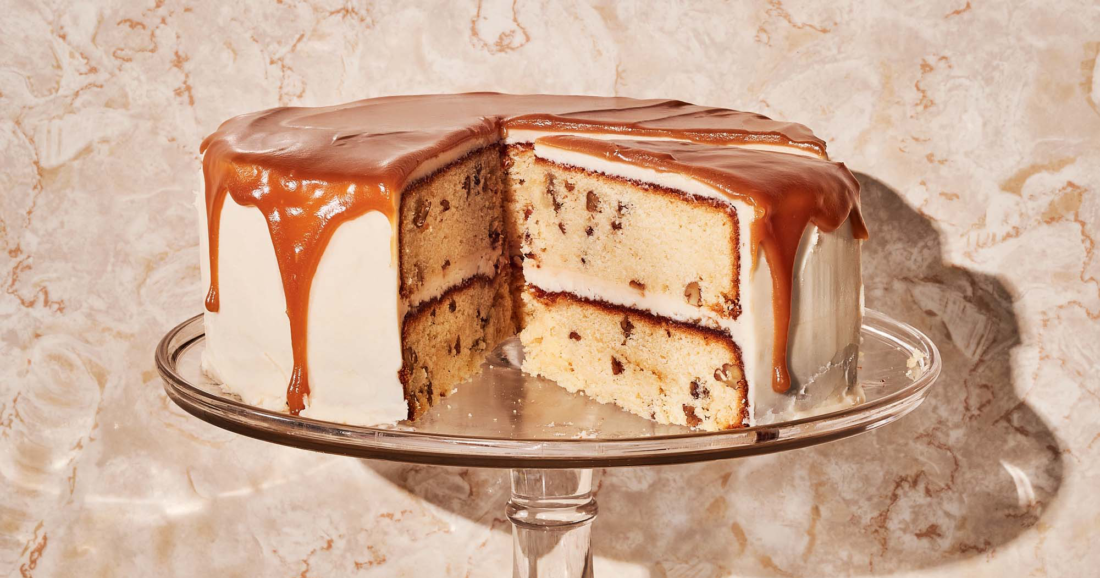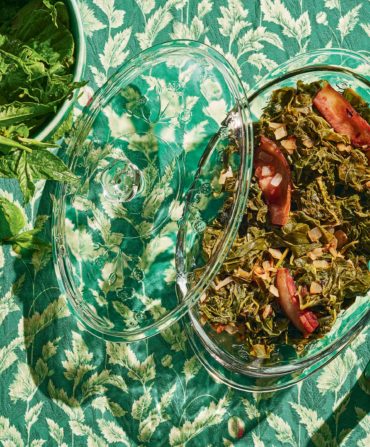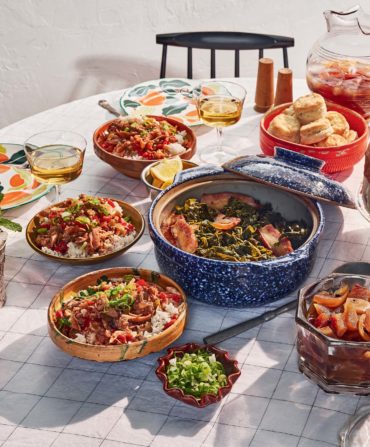I hadn’t thought about caramel cakes until I heard about Mrs. Beavers.
I had been digging through my grandmother’s collection of recipes while resurrecting heirloom desserts for my rural Virginia bakery, hoping to find some kind of long-lost cake that needed a little light shone on it. But so far I was flummoxed.
Within a week, as it happened, a customer asked me if I could revive a cake beloved among the townsfolk of The Plains, a little burg up the road. “Mrs. Beavers, now gone, was famous for her caramel layer cake that still haunts us all,” he told me, providing a skimpy list of ingredients from family members uncertain about the preparation. I began searching through vintage cookbooks for caramel cakes, but the recipes glossed over the cake part—usually stating only to “make a simple yellow batter”—and focused on the mishaps of working with caramel, which tends to burn or harden quickly. I followed one of those recipes, not loving the cake’s dry results. But I was smitten with the richness of home-cooked caramel and yearned to upgrade this disappearing jewel. The key to the solution was another week away.
I had been shipping baked goods to friends in the fashion designer Billy Reid’s office in Florence, Alabama. Intrigued by our cakes, Reid began talking about an idea that would provide vital clues to the Mrs. Beavers cake mystery. “I have a memory of a recipe from my great-grandmother,” he told me. “She ran the high school lunchroom for thirty-five years in Kentwood, Louisiana, and baked cakes in the back of her house for weddings and who knows what.” The cake he pined for was one that her daughter—his grandmother—had continued to make. “It was sort of a caramel cake mixed with a cream-cheese-like pound cake. It had a slightly crusty top, and it dripped with a caramel coating. There may have been pecans.” He then asked, “Is that something you might be able to mess with?”
I rolled up my sleeves. In the bakery’s kitchen, standing next to Jan Pouzenc, my pie maker, I dipped into a bubbling pot of her caramel sauce, rich with cream and butter, destined for our salted caramel apple pies. I added the caramel to my cake batter, along with a fistful of pecans, and knowing how well caramel and apples play together, I poured in some apple juice to add another layer of flavor. I experimented with several recipe versions, brushing more warm caramel onto the cake so it soaked into the crust. Soon another UPS shipment arrived in Alabama. This one, Reid said, nailed it.
Employing what I’d learned, I returned to Mrs. Beavers’s caramel layer cake. Adding pecans created more interest, and with some cream cheese and awash with our caramel, inside and out, it surely wasn’t dry. Finally, I covered it with a thin coat of white frosting with additional caramel dripping from above. I’m happy to say that while it may not be Mrs. Beavers’s exact recipe, it has proved to be every bit the cake that her many admirers feared was lost.

This article appears in the August/September 2020 issue of Garden & Gun. Start your subscription here or give a gift subscription here.








